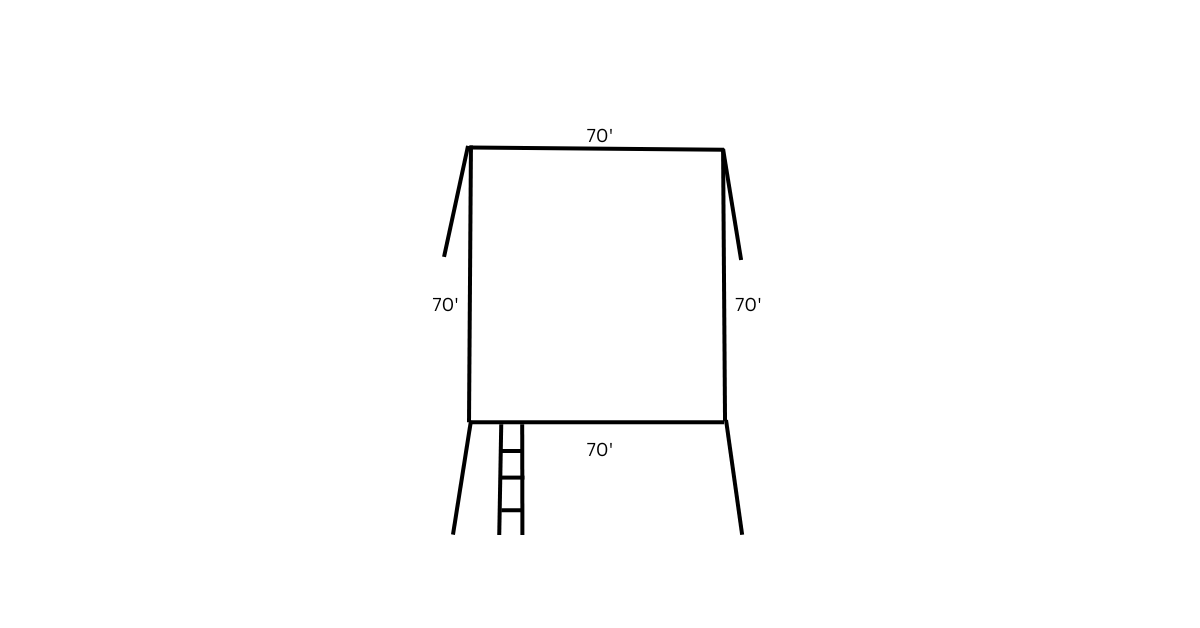Building a Sky loop antenna is well worth the effort. This is an antenna that hears 1-2db better, while having a 1-3 db lower noise floor. The best aspect of the skyloop is that you will be heard on transmit. A misconception of the loop is that you need acres of land, I put an 80 meter skyloop in a 75′ by 75′ lot.
The loop can be a resonant antenna on one or two bands, and a non resonant antenna on other bands without suffering much loss at all. There are several ways to build a loop, you can build a square horizontal skyloop. Or you can build a triangle shaped delta loop, mounted either vertically or horizontally. There is also the rectangle loop where the sides are twice the length of the ends. And the circular loop, this is best but it requires many supports.
The first step is knowing what frequency, or frequencies you want the antenna to work on. You want to cut the wire for the lowest band you plan to use. Let’s say we are build an 80 meter skyloop and your desired frequency. Once you have your frequency, let us say 3.800. You will divide 1005 by this frequency to get you wire length, remember to leave a little extra on each end for connections and tuning.
1005 ÷ 3.800 = 264.47
So the wire length is 264.47, so I would cut it at roughly 268 to 270 feet.
Now you want to decide if you feed it with ladder line back to the shack or use a bal-un and coax. I had to go with the latter because my antenna farm is away from the house and feed underground using an antenna switch.
Gather together all the parts you will need for the build:
- 270 feet of wire, large diameter is more wide banded
- 4 or more insulators
- 500′ Dacron rope
- Ladder line or bal-un(high SWR bal-un) and coax
- Solder, gun, heat shrink or crimps
Sky loop Construction
When building a sky loop you want to pick your supports or trees that will get you as high as possible and about 75′ apart per side and get your Dacron rope up over them, put the insulators on the antenna side of the rope. Run the wire around and through the 4 insulators, tie the ends of the rope off so you do not pull it out of the tree.
Ladder Line
If you are using ladder line, make sure it will reach into your tuner. Solder one end of the Ladder line wire end of the antenna wire and cover with heat shrink, make a temporary connection with the other wire for tuning. Raise the antenna into the air as high as possible. Take the other end of the ladder line into the shack and connect it to the tuner.
Check SWR with an RigExpert on the antenna at 3.800 and adjust antenna wire length for lowest SWR, then make temporary connect permeate. Tune higher frequencies with antenna tuner during use.
Bal-un and Coax
Connect each end of the antenna wire to the bal-un, and run the coax into the house to the tuner. Adjust wire length for lowest SWR on 3.800 as a single band antenna. Or adjust for useable SWR across as many bands from 3.800 and up.
Option
You can also come down from the antenna wire with ladder line, and mount the bal-un at ground level. Then run the coax into the shack. This poses an extra tuning challenger, because you have to tune the antenna wire for resonance at the desired frequency, and adjust ladder line length to achieve 50 ohms, or as close as possible.
Non Resonance
With either antenna, you can just put it up and tune it with the tuner on each band. This antenna works well as a multi band non resonance antenna.
Building a Sky loop Results
I built the second antenna with the optional ladder line, but with a twist for myself. I cut the wire for 3.800, but I tuned it for lowest SWR on 14.200 because 20 meters if my favorite band, it still works on 40 and 80 meters but with higher SWR.
It works great on all the bands between 80-10, and is pretty good on the WARC bands. This antenna has out performed every one I have owned, even the delta loop but it was close.
The performance was really noticeable when I put the Elecraft K4 on it, the signals ae loud and full with a low noise floor. I am thinking about putting a 160 meter loop up around the 80 meter one.
